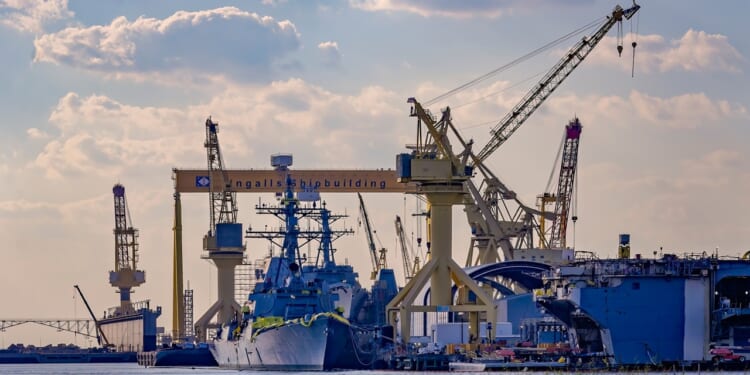Huntington Ingalls Industries, America’s largest shipbuilder, is enjoying sudden success in hiring new shipbuilders and retaining skilled ones—with positive consequences for the US Navy.
There’s some cautious optimism among the leaders of Huntington Ingalls Industries (HII), the largest shipbuilder in the United States. That’s because, according to Defense One, HII has hired over 4,600 shipbuilders this year alone. Further, HII has seen improved retention among their existing workforce.
Before this year, HII was bleeding skilled workers. Now, many of its workers are staying to help build America’s maritime defenses. The question, as always, is whether this will be enough to staunch the bleeding, given that America’s naval shipyards have been at crisis levels for decades.
How HII Is Hiring More Workers
HII is in the midst of trying something really innovative. It didn’t create some new AI-powered automated shipbuilder, or try for a new iconic media blitz to attract talent and keep the people it already had. Instead, HII simply raised wages and crafted a hiring strategy targeting more experienced workers and workers coming out of regional pipelines.
In other words, for newer hires, HII looked at people in apprenticeships and even high school programs in places like Mississippi, where it is based.
Now, HII has better people who are happier because of the better pay. This all translates to more ships and submarines being built than would have ordinarily been. Of course, there remain many hurdles HII must still overcome—but this is at least an important start. You don’t change a failing culture overnight.
Warship building is a critical capability for the United States Navy and US national defense. So, when the Navy’s prime builder—HII—says things are, in fact, getting better, that has broader implications for naval strength and future ship deliveries. One of the biggest problems facing American naval shipyards involve delays and, therefore, cost overruns. These occur, in many cases, because of high workforce turnover, lack of experienced workers, or inefficient shipbuilding processes (resulting from those other two problems). If HII is improving retention and experience level, it may help reduce those risks.
Many heavy manufacturing sectors, notably in defense, struggle with finding enough skilled workers, retaining them, and moving from the warm body approach of just hiring en masse to a more methodical, selective hiring process where they hire fewer people, but those fewer people are more experienced. These individuals stay longer in their jobs as well as ensure that productivity increases.
That’s a net win for America’s navy.
Shipbuilding Is a Complicated Process
Still, the problems are great that face the United States in this crucial domain. HII is still negotiating with the union at its Ingalls facility. So, nothing permanent has been arranged. These advances are all fluid and more theoretical than standardized for the company. Progress is being made in the negotiations, but the workforce has not been fully recruited. Many of the rosier assumptions put forward by HII are projections based on what they believe the final deal with their union will entail rather than anything agreed to fully.
Given the scale and complexity of shipbuilding, improvements in one yard or part of the workforce don’t immediately fix all the legacy issues in the industry.
Overall, this is a step in the right direction for a US shipbuilding capacity that has been withering on the vine. These improvements, once completed, will yield to higher workforce productivity. It is unlikely that there will be many complications from HII’s labor union—since, after all, the labor union wants more workers and greater pay for its members, and HII appears willing to deliver both. Nevertheless, supply chain and technical issues could easily derail progress on these important moves by HII.
About the Author: Brandon J. Weichert
Brandon J. Weichert is a senior national security editor at The National Interest. Recently, Weichert became the host of The National Security Hour on America Outloud News and iHeartRadio, where he discusses national security policy every Wednesday at 8pm Eastern. He is also a contributor at Popular Mechanics and has consulted regularly with various government institutions and private organizations on geopolitical issues. Weichert’s writings have appeared in multiple publications, including The Washington Times, National Review, The American Spectator, MSN, and the Asia Times. His books include Winning Space: How America Remains a Superpower, Biohacked: China’s Race to Control Life, and The Shadow War: Iran’s Quest for Supremacy. His newest book, A Disaster of Our Own Making: How the West Lost Ukraine is available for purchase wherever books are sold. He can be followed via Twitter @WeTheBrandon.
Image: Shutterstock / Carmen K. Sisson.
















